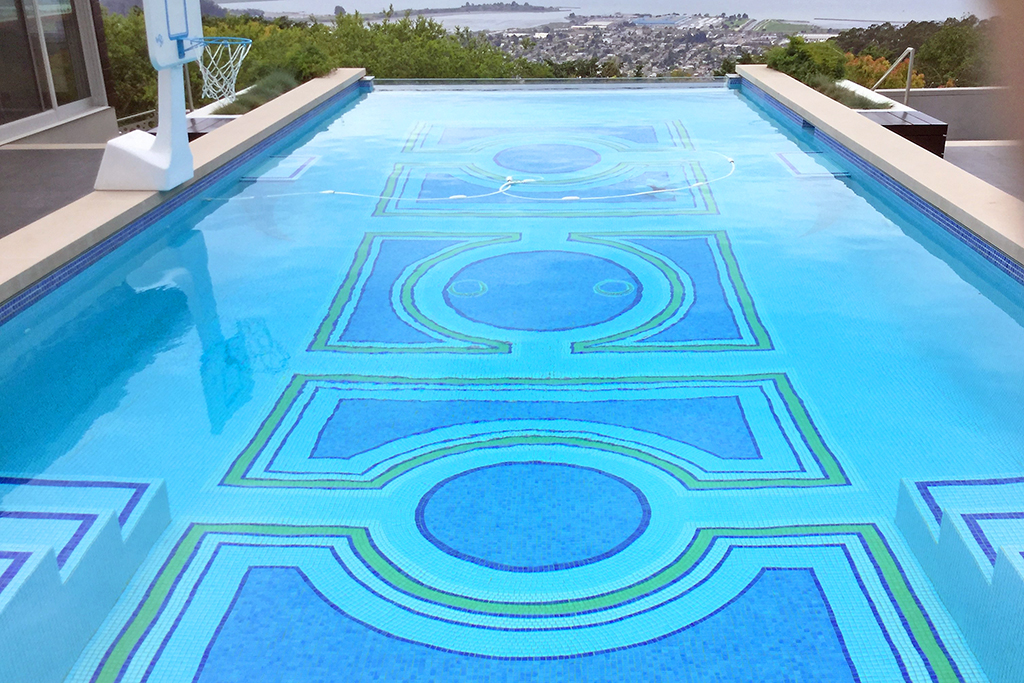Introduction
Cracks in commercial pools can be a considerable concern for home supervisors, professionals, and property owners associations (HOAs) alike. Whether it's during the course of pool renovation, pool remodeling, or merely routine upkeep, resolving fractures effectively is critical to ensuring the durability and safety of a business pool. With extensive experience in commercial swimming pool resurfacing and repair work, we look into the typical concerns faced during these jobs and provide insights on how to browse them efficiently.
In this article, we will check out various elements of pool crack repair, including its value, approaches, challenges, and preventive procedures. We'll also touch on associated topics such as pool replastering, pool resurfacing, pool tile installation, and more. By the end of this extensive guide, you'll have a solid understanding of how to deal with these concerns head-on.
Understanding Pool Cracks: Causes and Effects
What Causes Fractures in Commercial Pools?
When it comes to industrial swimming pools, several aspects can result in fractures. These include:
- Structural Issues: Poor construction strategies or insufficient products can jeopardize the stability of the pool structure. Soil Movement: Modifications in soil structure or moisture levels can trigger shifting that leads to cracks. Temperature Fluctuations: Severe climate condition can broaden or contract pool products, resulting in cracks over time. Chemical Imbalance: Inappropriate chemical balance can cause disintegration of plaster or tiles.
The Impact of Cracks on Pool Functionality
Cracks not only mar the aesthetic appeals of a swimming pool however likewise posture safety risks. Water leakage might take place through these fissures, leading to potential structural damage and increased water bills. Furthermore, they can create an environment conducive to algae growth if not pool replastering addressed promptly.
Addressing Typical Concerns Dealt with Throughout Commercial Fracture Repairs
Identifying Types of Cracks
To efficiently address fractures, it's vital to identify their types:
Hairline Cracks: Frequently superficial but may get worse if ignored. Diagonal Cracks: Indicative of significant structural issues. Settlement Cracks: Take place due to ground movement; need immediate attention.Conducting Regular Inspections
Regular examinations are crucial for early detection of fractures. Utilize expert services concentrating on business pool examination to make sure extensive assessments.
How frequently needs to inspections occur?
It's advisable to perform assessments a minimum of twice a year or after extreme weather events.
Choosing the Right Repair Method
Epoxy Injection for Structural Repairs
For deeper fractures that suggest structural failure, epoxy injection is a trustworthy approach. This includes injecting epoxy resin into the fracture under pressure to restore structural integrity.
Plaster Repair for Surface-Level Issues
For hairline fractures or surface flaws, simple plaster repair work may be sufficient. Make sure proper preparation before using new plaster for optimal adhesion.
Resurfacing vs. Replastering: What's Best?
Understanding when to resurface versus replaster is important:
- Resurfacing is ideal for extensive wear but minimal cracking. Replastering is essential when there are major underlying issues.
Common Obstacles During Industrial Fracture Repairs
Weather Conditions Affecting Repairs
Weather conditions play a crucial role during repair work. High humidity or rain can affect treating times pool renovation and adhesion quality.
What must you monitor?
Keep an eye on weather report prior to scheduling repair work-- preferably picking days with stable conditions.
Material Accessibility and Sourcing Challenges
Finding quality materials for repair work might present challenges-- specifically in busy seasons where demand surpasses supply.
How do you source materials effectively?
Develop relationships with credible suppliers well ahead of time to secure necessary materials without delay.


Cost Considerations for Repair Projects
Budgeting for Crack Repairs
Creating a spending plan for fracture repair work involves accounting for labor expenses, product costs, and prospective unforeseen problems that may develop throughout repairs.
How do you estimate expenses accurately?
Consult with experts who specialize in commercial pool repair for comprehensive quotes customized to your specific job needs.
Potential Roi (ROI)
Investing in timely repair work guarantees boosted property worth while decreasing future liabilities connected with unaddressed damages.
Preventive Steps Against Future Cracking
Implementing an Upkeep Schedule
Regular maintenance schedules assist catch minor issues before they escalate into significant problems. This consists of checking water chemistry frequently and keeping appropriate filtration systems.
Soil Stabilization Techniques
For properties prone to soil movement, think about carrying out soil stabilization techniques before carrying out brand-new building and constructions or renovations-- such as setting up drain systems or keeping walls.
FAQ Section
1. What is the very best approach for repairing swimming pool cracks?
The finest technique depends upon the kind of fracture; epoxy injection works well for structural issues while plaster repair fits surface-level cracks best.
2. How typically needs to an industrial pool be inspected for cracks?
Commercial pools should preferably be checked at least two times a year or after considerable weather condition events.
3. Can I carry out fracture repair work myself?
While small repair work might be possible do it yourself jobs, it's suggested to seek advice from professionals-- particularly for bigger or deeper cracks-- to make sure safety and effectiveness.
4. Will neglecting little cracks intensify the problem over time?
Yes! Small cracks can lead to more considerable structural problems if left unattended-- from water loss issues to promoting further splitting down the line.
5. What are common signs indicating that my pool needs resurfacing?
Signs consist of rough surfaces causing skin irritation, staining from spots or algae buildup, and noticeable wear around joints or tiles.
6. Does business insurance cover swimming pool crack repairs?
This varies by policy; it's vital always to review your insurance protection information regarding maintenance-related claims.
Conclusion
Addressing typical problems dealt with throughout industrial crack repairs needs alertness, competence, and proactive steps from home supervisors and professionals alike. From identifying causes early on through routine inspections to employing reliable repair work methods like epoxy injection or resurfacing methods-- taking an educated technique will make sure long-lasting complete satisfaction with your commercial swimming pool investment.

Whether you're thinking about HOA swimming pool remodelling strategies or seeking assistance on intricate business swimming pool construction projects including tile setup and coping replacement-- being knowledgeable about these typical obstacles will empower you as you navigate through each stage successfully!
By following this detailed guide on addressing typical issues faced during commercial fracture repairs, you'll be well-equipped with the knowledge needed not simply for successful execution but likewise ensuring continued enjoyment from your swimming facilities!